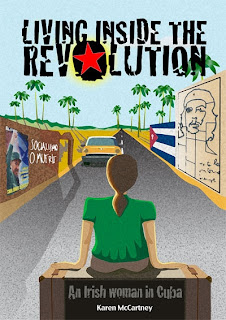“A savage land, yielding neither water enough to drown a man, nor tree to hang him, nor soil to bury him.” (Edmund Ludlow, Oliver Cromwell’s Chief of Command in Ireland
Sinewy rock, battle-scarred shrubs, a heavy sky and a groaning wind that buffets and mutes the cries of a single wheatear, the only other living creature on this solitary landscape. This is Mullaughmore Mountain in the Burren, County Clare
Before me is his “savage land,” a place of paradox and anachronism. It is hostile and yet welcoming and gentle. At my feet, where the grass looks as if it has had the soul sucked out of it, the frailest of exuberantly coloured flowers bloom. Sub alpine flora, orchids, are nestled into the limestone rock, where they flourish year upon year in defiance of the grey desertic wilderness that is their home. Orchids, blue gentian and early purple, smile sweetly in the face of each gust, Mountain aven extend their soft white petals regardless of the leaden sky. Nearby, an Irish orchid, a Mediterranean plant, cranes her purple head above the crevice that cradles her.
This is a land of slabs and crevices, clints and grikes, that host a microclimate which nurtures the highly unique fauna of the Burren. Protected from the relentless wind and warmed by the limestone rock which retains the heat of the sun, 24 species of orchid and around 600 species of plant flourish on a glacio-karst landscape. Grike, clint, karst – rock solid uncompromising words - and turloughs too, lakes that appear and then disappear into the subterranean caves and underground rivers that criss-cross this “savage land”. This is a place that refuses to conform, that mystifies. In the waters of the turlough at Mullaughmore my reflection is aquamarine; unsettled I glance up and see the greyness has thickened. No sun, no blue sky, no explanation.
The travel writer, Jan Morris, described The Burren as a “very peculiar place.” Its very peculiarity troubles me. The rock is scoured with lines and yet there is no trace of symmetry. The wrinkles of 350 million years are carved into its slopes. It’s a span of ages that my mind cannot grasp, that humbles me, reminding me of my utter insignificance. Even the ephemerality of the blue gentian I am gazing down at seems infinite in the context of my own life as a momentary journeyer on the rock of ages, not even a blink in the eye of history.
At Black Head beach the line of erratics, wandering boulders, further unsettles me. They marched in here millions of years ago with massive glaciers and were abandoned when the ice retreated. Of a slightly darker hue than the surrounding limestone, the erratics look out of place, rounded and upright, sentries on slabs that have borne the weight of their vigilance for millennia. I contemplate the point of contact, wondering what hundreds of millions of years of touch feels like. I can’t comprehend it and surrender out of respect for the mystery of the geological forces that brought the erratics to this beach.
At Poulnabrone portal tomb in a field beside the Corofin to Ballyvaughn Road
Driving back to Ballyvaughan along the R480 I note that my mood has lightened. It is spring and this quiet road is laced with whitethorn in full bloom, red and white valerian, primroses and violets, and the aroma of freshly cut grass hangs in the air. The familiarity is comforting. I’ve exchanged millennia for seasons, for an expanse of time that does not lure me into existential meanderings. I take a deep breath and wonder whether others have responded similarly to the paradoxes of the Burren.
In the local tourist office literature on display invites visitors to “uncover the secrets of the Burren.” Maybe it would be fairer to invite them to contemplate its secrets, for that is all we can do. An acquaintance with the facts, if we are fortunate enough to have access to them, is akin to following signposts in the dark. The surest guide has to be the imagination and a willingness to embrace the mystery. Without imagination and without this willingness, we will never really get close to the secrets of the Burren.



